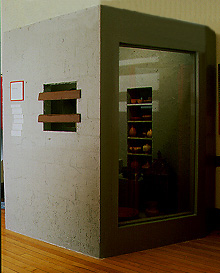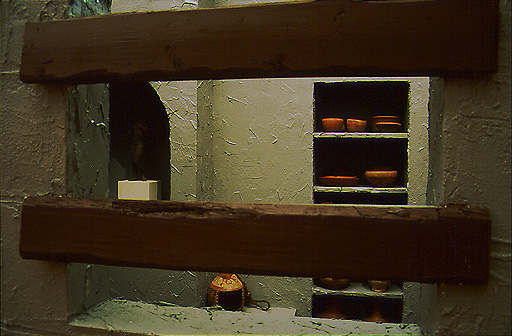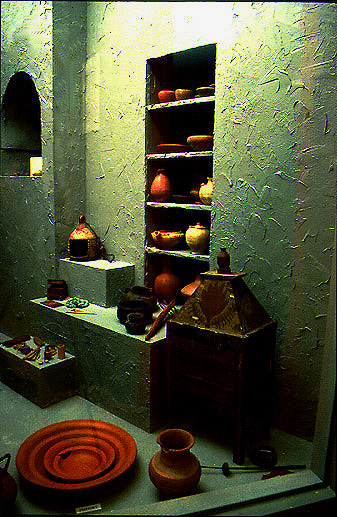the small window

the big
window
1. The weaving together of words in language.
2. The parts of a discourse that surround a word or passage
3. The interrelated conditions in which something exists or occurs.
No one view captures all that can be seen.
| Directory |
"The intention is to evoke for the visitor a vivid
impression of the environment of life at Karanis...to touch the thread of
continuity that links antiquity to life in our own day."
(fromKaranis: An Egyptian Town in Roman Times, 1983
Kelsey Museum exhibition catalogue.)
| Look into the small window |
 |
Look into the big window |
This photo shows a selection from about 44, 000 artifacts excavated at Karanis by the University of Michigan, 1924-1935. Artifacts from Karanis constitute nearly half of the Kelsey Museum's holdings.
One of the ways in which archaeological museums educate modern viewers about
the past is through contextualized exhibits, realistic recreations of ancient
environments. Yet this kind of exhibit is itself a constructed reality--a
presentation of aspects of the past that are considered important in the
present.
Does this change the value of a contextualized exhibit?
| Look through the other window |  |
Go Back |
Have a look through the window into this typical domestic setting. But remember, no single excavated unit contained all these artifacts. These artifacts were excavated from different areas and periods of occupation.
Does this knowledge make you see the objects differently?
 |
|
Jugs like the one in the foreground could be used for various purposes: domestic, funerary, even agricultural, as elements in water wheels for irrigation. This jug was excavated in a house at Karanis, so we know it served domestic purposes such as holding wine or carrying water.
Modern pottery classifications date the jug--and therefore the context in which it was found--to probably the 3rd - 4th c. CE.
| Aphrodite | Pot vs. Vase | Classification | Directory |